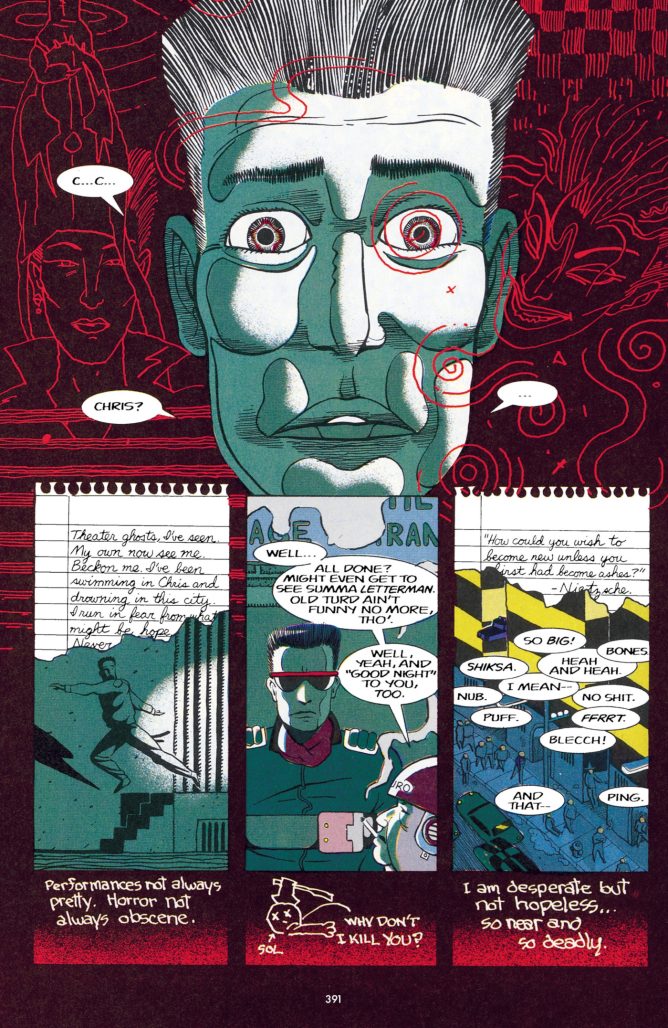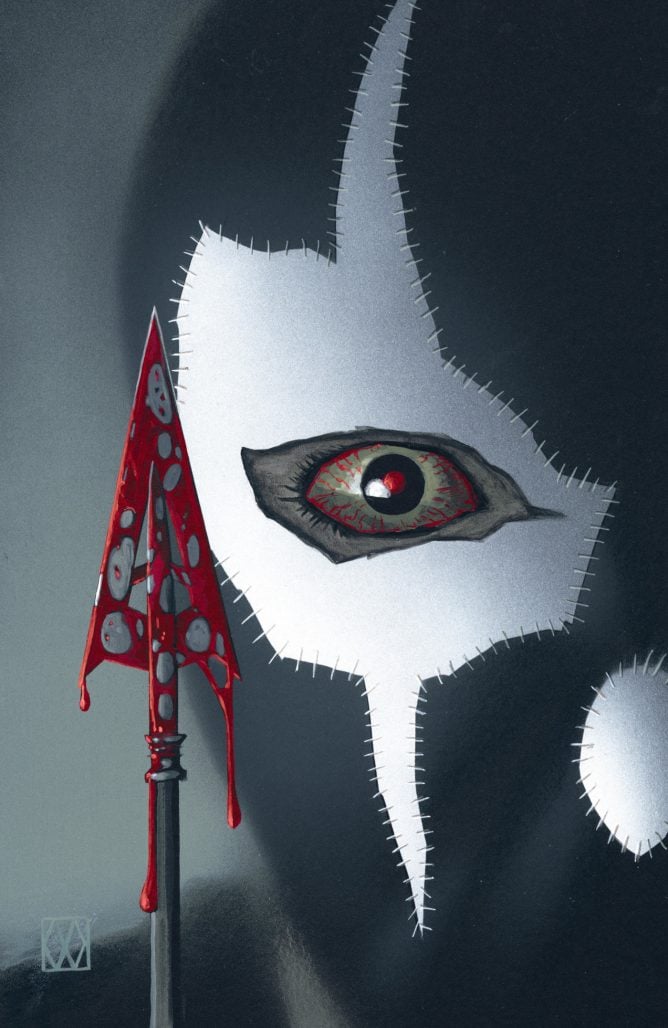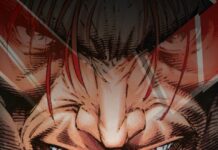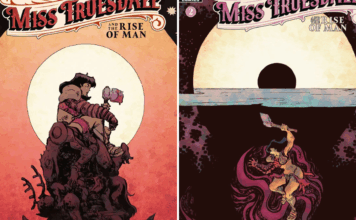Sometimes I wonder how I managed to get into some of the comics I read as a kid. I was big into horror, sci-fi, mystery, anything genre, but for the first bit of my childhood I was largely limited to DC Comics, some books based on cartoons, the issues of The Mighty Thor that I convinced my parents to buy when they went into town on weekends for groceries, and the odd three or four pack that I could find when we went shopping elsewhere. Particularly department stores.
When we moved into the city and I finally had access to a dedicated comic shop, I didn’t limit myself to any singular publisher. I dove in to just about anything that wasn’t just DC. Sampling just about anything that caught my eye from a variety of the ’80s indie boom. And looking back, it’s kind of amazing what my parents let me read. I didn’t really have any limits. Werewolves and vampires were probably how I came to my first few issues of Grendel.
It really wasn’t until the ’90s, when Matt Wagner got full rights back to the character, and Grendel: War Child published through Dark Horse and the first Batman/Grendel crossover that I can say I really got into the franchise, but I had a number of those Comico issues. Trailing from the end of Devil’s Legacy through The Devil Inside and a smattering of books later. Much later I’d follow Dark Horse’s reprints and find a collection on eBay to complete the Comico set (plus some issues of Mage, Silverback, and an assortment of other Comico books).
But it was definitely Grendel #13-15 that haunted me. Unlike many other comics I’d read.
“How deep does the darkness run?”
Re-conceptualizing and contextualizing is a running motif in the Grendel series. It happened originally with Devil by the Deed summarizing and concluding the narrative set out from the first series, it continued with Christine Spar taking on the Grendel mantle in the second series, and it did again as that series continued and changed. With Grendel: The Devil Inside by Wagner, Bernie Mireault, Joe Matt, and Bob Pinaha the idea of Grendel changed, morphed into almost an evil spirit, and introduced debilitating mental illness into the franchise for the first time.
The story follows Brian Li Sung, the previous Grendel’s sometime lover and confidant, having moved to New York City where he’d hidden away Christine’s notes for the in-universe version of Devil by the Deed and the original Grendel, Hunter Rose’s, journals. And he promptly seems to succumb to the noise and squalor, going insane as he attempts to become the next Grendel. The cacophony of Sung’s life is beautifully presented in how the story is told.
It’s a perfect storm of all of the creative team overlapping the narrative to show the descent into madness. There’s the content of Wagner’s dialogue and narration, including a crass, disturbing NYC with characters spouting racist, misogynistic, and homophobic slurs and rhetoric casually. It’s represented through Bob Pinaha’s lettering, representing the multifold levels of narrative; Sung’s notebook, the chicken scratch of Grendel’s thoughts (which Sung is writing in his notebooks, making you wonder about his mental stability), the various disembodied chorus of voices on the NYC streets, and the conversations between the characters themselves.
And through the art from Bernie Mireault, Joe Matt, and Matt Wagner. Mireault’s art emphasizes the claustrophobia of this New York City. The developing illness and uneasiness of Brian Li Sung as he falls deeper and deeper under the influence of Grendel. The almost quaint, yet still unhinged patchwork of a mask. And the visions of Grendel that Brian starts seeing. Made even more interesting through the colours and effects that add a bit of hallucinatory darkness and static noise.
“No hope for the wicked…no luck for the lost.”
While the supernatural was pretty much always a part of the Grendel franchise with Argent from the beginning, Grendel: The Devil Inside by Wagner, Mireault, Matt, and Pinaha make you wonder about the spirit of Grendel and its negative influences. Whether it is an external possessing force or if Brian Li Sung is just slowly going insane after the death of his lover, the trauma of his old boss, friction against living in New York, and obsession with Hunter Rose’s journals as he works to become the next Grendel.
It’s an amazing experiment in storytelling that pushed the franchise forward, bringing in new ideas as it rather interestingly looks at the effects of violence upon the individual. That you could contextualize in a way as dealing with post traumatic stress disorder. Or as it shifts again later as the influence of the spirit of the Grendel on society as a whole as the narrative shifts again later. Wagner has always been great at changing the franchise in new directions and this arc really showed that there were no limits as to where he would take it.
Classic Comic Compendium: GRENDEL – THE DEVIL INSIDE
Grendel: The Devil Inside
Writer: Matt Wagner
Artist: Bernie Mireault
Colourists: Matt Wagner, Joe Matt, & Bernie Mireault
Letterer: Bob Pinaha
Publisher: Comico (original issues) | Dark Horse (reprint & collection)
Release Date: October 2 – December 4 1987 (original issues) | September 19 – November 21 2001 (reprint series)
Available collected in Grendel Omnibus – Volume 2: Legacy
Read past entries in the Classic Comic Compendium!
Check out other recent review pieces from The Beat!















I remember being up in Maine with my family and stumbling into a comics store on a cold December weekend, Mireault’s art captured the cold in that you could feel it. He was nothing like the Pander Bros yet the perfect follow up. This is one of my favorite all time comic book arcs, short haunting and tragic made moreso by the recent losses of Mireault and Matt.
That 50 issue run of Grendel is an all timer. The peaks Wagner hit and the collaborators. Pander Bros, Mireault, Matt, Sale, Messner-Loews, Snyder, Geldhof, McKeown. My copies of the books are so worn out but I wouldn’t give them up.
Thanks for writing about these issues.
Comments are closed.